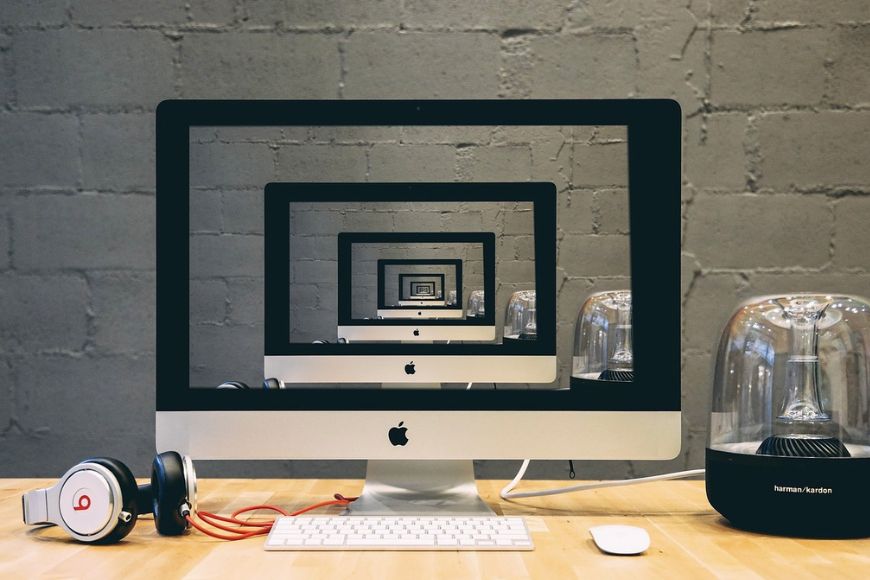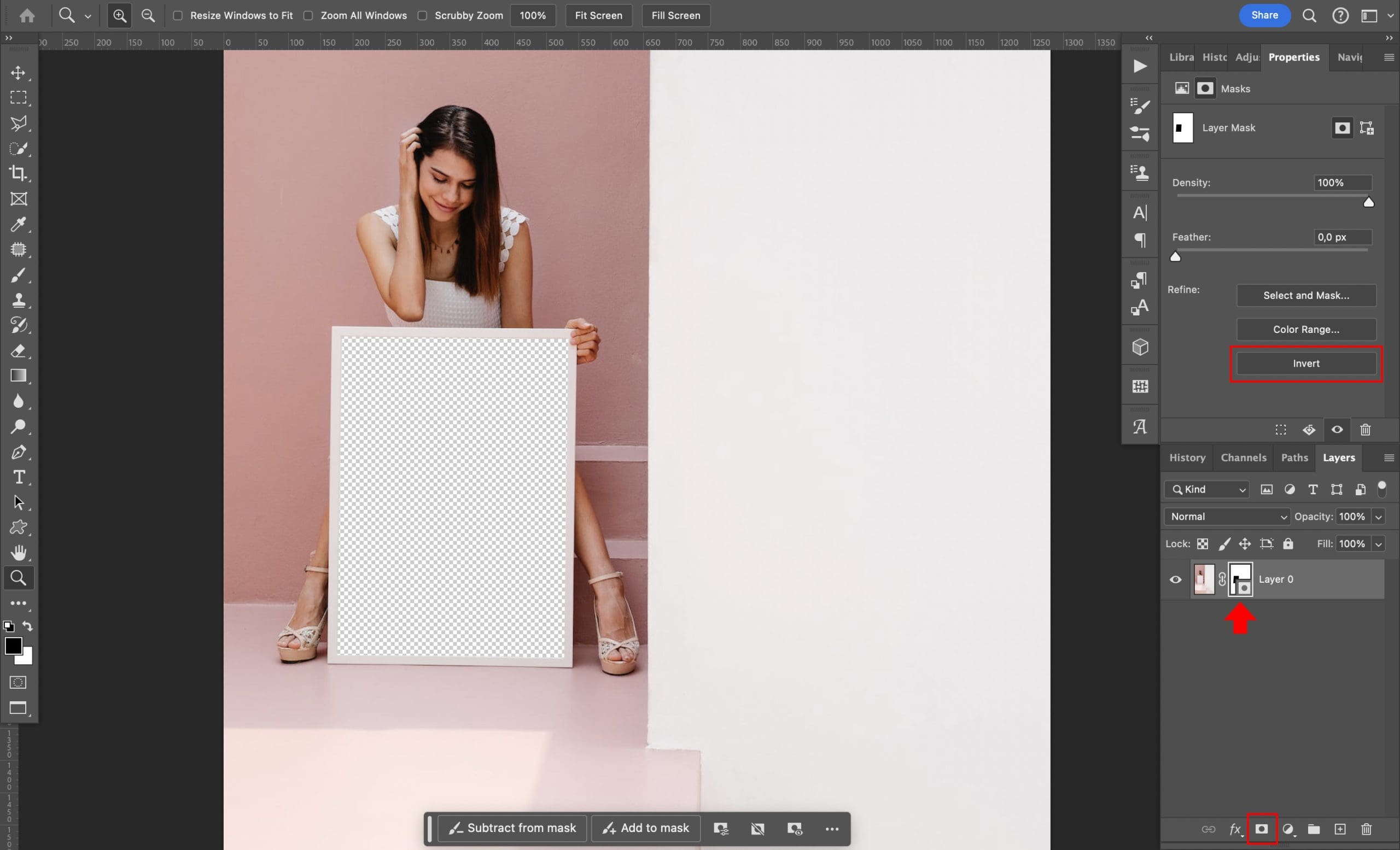
How to Create the Droste Effect (Image Within an Image)
Dive into the mind-bending world of the Droste Effect, where images spiral into infinite loops. Learn how to create your own picture within a picture.
Learn | By Tammy Danan
Photography is such a fun playground for creatives, and this article about the Droste effect will help you create more interesting images.
The spiraling or mirror-like effects of images displaying their smaller versions within themselves are definitely fun and funky enough that it makes people stop in their tracks.
As a photographer, I am fond of experimenting with this effect as it always has that unique output.
Let’s discover more about what Droste is about and how you can create one for your next work.
Table of Contents
What Is the Droste Effect?

Image Credit: Pixabay
The Droste effect in images or designs is an effect that displays parts of the image in a smaller version with a spiraling effect, creating what seems like an infinite loop.
Images with this effect are considered to be pictures with no beginning and no end, also known as a picture inside a picture or recursive picture.
The Droste effect may look like a classic spiraling clock with the numbers on repeat, or it can be something more complex and modern.
This effect can be done for photos and designs using photo spiralysis software now available online to experience this kind of artwork with the Droste effect.
Why Is It Called the Droste Effect?
The Droste effect is a term coined by Nico Scheepmaker, a poet and columnist.
It is derived from a Dutch brand of cocoa powder which is also called Droste.
It shows a nurse holding a tray with a box of Droste cocoa powder, and in that box is the same image of the nurse holding the tray with a box of Droste cocoa powder and so on.
This Droste packaging was designed by Jan Misset in the 1900s.
The 2 Main Types of Droste Effect in Photography

Image Credit: Pixabay
Droste effect, also called mise en abyme, there are two main types of it present in photography.
While both types feature repetition, they also have their distinct differences.
Simple recursive image
A simple recursive image is seeing a clear repetition of a certain image.
It usually contains a smaller version of the image, getting smaller and smaller until the whole frame can no longer be seen in detail.
It is not visually complicated and doesn’t promote infinite depth.
Spiral effect
A spiral effect is creating an illusion of infinite spiraling inward or outward.
It gives a continuous pattern of twisting or curving at the center of the image or expanding outward.
It can be more visually complicated and usually gives a sense of depth and motion.
What Does the Droste Effect Do?
Droste effect is a visual technique that displays self-replicating images to create an illusion of an infinite loop.
It also shows an image within an image getting smaller and smaller in size until details are no longer noticeable.
Photographers usually use this effect in surreal photography to showcase the flexibility of their images in storytelling and artistic expression.
This effect also helps to portray more in-depth and intriguing photos.
Is the Droste Effect Infinite?

Image Credit: Pixabay
Droste effect only creates the illusion of being infinite, not literally infinite, in its structure and practice.
It is two-way; either it produces the concept of replicating itself in one frame until images are no longer visibly detailed or creates the spiraling effect to give an illusion of an infinite loop.
It is not infinite in nature because, for example, in digital art or photography, there are limitations to how small the images can be.
Droste effect gives a repetition effect or an impression of infinity, but it stays that way—an impression.
How Much Do You REALLY Know About Photography?! 🤔
Test your photography knowledge with this quick quiz!
See how much you really know about photography...

What Types of Photography Use the Droste Effect?

Image Credit: Pixabay
The Droste effect can be applied to many photography themes, giving the images visual depth, uniqueness, and flexibility.
Adding Droste effects on your images allows you to create beyond the norm.
Here are three photography themes that widely use the Droste effect as part of their concept:
Surreal Photography
The Droste effect is more common in surreal photography as this type focuses on relaying drama, emotions, and poetry in its art.
Through the Droste effect, surreal photographers can provide dream-like images that are impossible in reality.
This is not a new concept in surreal photography.
It’s a visual effect that expands the artist’s and the viewers’ imaginations, allowing them to see beyond a single image.
Portraits are no longer boxed in their classic look because of the Droste effect.
Portrait photography usually tells a story, but using the Droste effect adds a meaningful substance and a unique twist.
Portrait photographers use Droste to give some character to an image and create a replica within itself to give more story and depth.
Architectural photographers often use the Droste effect to emphasize the strength of their architectural photos.
Droste effect helps to highlight the edges, structure, and geometry of buildings and spaces.
Using the Droste effect in this type of theme plays with people’s minds to see boundaries without limits.
6 Examples of the Droste Effect Photo (Picture Inside a Picture)
Let’s dissect some images showcasing the Droste effect and what makes these types of images distinct.
Robert Lee’s Droste Effect and Recursion

Image Credit: Robert Lee
Images by artist Robert Lee show perfect examples of images with no beginning or end.
His masterpieces are mostly in circular motion, like hypnotic swirls, and some with striking colors and sharp edges.
In addition, because of the Droste effect, when you stare at the center of his images, it seems to be moving in circles, making you gaze even more.
Harold Davis Droste Effect on Nature Photography

Image Credit: Harold Davis
Award-winning photographer Harold Davis, who won the 2022 Photographic Society of America (PSA), also uses the Droste effect in his work.
He focuses on landscape, architecture, and nature photography.
Davis loves to capture flowers, and in the above photo, he uses the Droste effect, giving these petals the illusion of an infinite loop.
M.C. Escher’s Fun Time with Recurring Algorithms
https://www.instagram.com/p/Bv6ScfHlG6Z/
Maurits Cornelis Escher, also known as M.C. Escher, was most famous for using the Droste effect in his visual arts.
His creations were described as impossible concepts made possible because of his wide imagination and unique creativity.
Escher combined reality and fantasy using shapes, architecture, and landscapes.
Despite his gift in visual art, he was not recognized until he reached the age of 70 when his works were shown in exhibits.
Nils Eisfeld’s Spiral Architecture Photography

Image Credit: Nils Eisfeld
Buildings, structures, interiors, and even stairways – these are some of his favorite subjects in his photography.
Nils Eisfeld incorporated his love for shapes and edges into creating unique photographs using the Droste effect.
His present works are usually circular in nature, such as staircases and high building ceilings.
Eisfeld can always give more depth and uniqueness to his images because of incorporating the Droste effect.
Feliks Konczakowski’s Infinite Loops
Felikx Konczakowski can turn common objects into interesting subjects.
His works include everyday objects such as donuts, cauliflowers, fruits, and flowers.
Konxzakowski uses editing software to create hypnotic images such as donuts with infinite loops, usually making them gifs.
Duvy McGirr Picture Within A Picture

Image Credit: Duvy McGirr
Duvy McGirr has passion and excellence in what she does.
McGirr uses the Droste effect to create a picture within a picture, making it more dramatic, enticing, and sophisticated while playing with colors and textures.
How to Create a Droste Effect Photo
You might be wondering how to create Droste effect images.
Here’s a quick and simple step-by-step guide to get you started.
Step 1 – Find your photo for editing

Credit: Pexels.com
Make sure your photo for editing is ready, and decide whether you wish to make replicas in one frame or format to spiral loop.
Choosing the right image will make a lot of difference as it will drive viewers.
Step 2 – Choose a Photo Editor

Credit: Photoshop 2024
Various photo editors can help you create images with the Droste effect.
Some famous photo editors are Adobe Photoshop, Photo Spiralysis, and Pixel Bender.
All are exceptional in how they create the Droste effect, so feel free to find what suits you best.
Step 3 – Open your image in your chosen software

Credit: Angela Roma
Open your image file in your chosen software and unlock the image so that you can make changes and incorporate the Droste effect. Proceed to start the edit.
Step 4 – Make a selection

Use the Quick Selection Tool, and select the portion where you want to create the Droste effect.
Step 5 – Add a layer mask and inverse selection

Click the Add Vector Mask, and you will see the outer part of the image become transparent.
Once done, inverse the selection so that the area where you will place the Droste effect will be in transparent.
Step 6 – Start to create your first Droste effect

Copy your image layer in the transparent frame for your first smaller version. Don’t forget to copy your image layer for the next round of versions.
Step 7 – Create the second version of the Droste effect, then keep going

For the next version, copy again the image layer on the first smaller version transparent frame.
Continue the same process until you reach the point where you can no longer see the small details on the image.
Step 8 – Save your finished output

Ensure that you can save your Droste effect on your image and download it for final output.
5 Ideas for Using the Droste Effect in Your Photography
You might be excited to try the Droste effect in your next photographs.
Here are ideas you can use to achieve your interesting Droste effect images

Image Credit: Unsplash
Use a mirror or an empty frame
Using a mirror or an empty frame can be the easiest and most commonly used idea for the Droste effect, as both can create a recursive effect.
Place your subject in front of a mirror.
Make sure you also capture the reflection of both the subject and the camera.
This way, without using any editor, you can create illusions that your image is replicated, giving it a sense of depth.
Use the reflection in water
A clear body of water can act as a natural mirror.
Capture a body of water with calmness and stillness, such as a pond or lake, and be amazed at how captivating it looks.
Use stairways or hallways
Find a circular staircase or a long hallway and take a shot of its length.
In the post-processing, try the Droste effect to create a tunnel effect that will give a stretch to infinity.
Use patterns
Find patterns in images like flowers, keyboards, clocks, etc.
Use a post-processing editor and give it a try with the Droste effect.
Take the HARD Photography Quiz! 🤯
Now it's time to really test your photography knowledge!
(99% of people can't get all the questions right...)

Make a little twist like hypnotic curls and create a spiral image with no end.
Use window-to-window
Find a building with multiple windows.
Take a photo of a glass window facing another window, showing the reflection of the previous window.
This way, another recursive effect can be made.
Etc.
FAQ
What is another name for the Droste effect?
The Droste effect, or what other people call “repeating anchor” or “portal to hell,” is also called “mise en abyme,” which means a picture repeats itself within a picture.
Who is famous for the Droste effect?
Maurits Cornelis Escher (M.C. Escher) is a Dutch artist known for using Droste effects in his works.
His most famous art piece was the 1956 lithograph Print Gallery, which reflected an art gallery with a man viewing an art gallery in reduced size and was twisted a little to create a cursive or spiraling effect.
What is the spiral Droste effect?
The spiral Droste effect is when an image has an open edge, and this same image has the same image spinning itself in a spiral effect.
What is the difference between mise en abyme and Droste effect?
The French term “mise en abyme” literally means “place into the abyss.”
It is an art technique that showcases a smaller image within itself in a spiral and infinite effect.
The Droste effect is the visual manifestation of mise en abyme in images and designs.
Is the Droste effect a fractal?
Yes, the Droste effect is considered a fractal.
Its repeating manner in images shows a fractal-like pattern, a complex geometric shape wherein the whole picture is divided into smaller parts, and each part is reduced to smaller sizes.

Check out these 8 essential tools to help you succeed as a professional photographer.
Includes limited-time discounts.
Tammy Danan is a freelance storyteller and the founder of Moss Content Studio. She’s a highly visual person who loves exploring how the art of photography intersects with our everyday lives.












